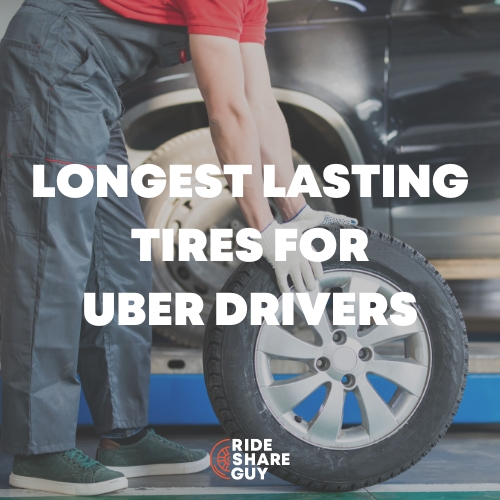Nothing is more frustrating for a rideshare driver than dealing with an account deactivation. You’re opening up the Uber app, ready to work a shift and earn some extra money, only to discover your account is disabled and you cannot pick up any passengers.
The app may give you a list of “required actions” to complete before you can go online again.
Or you may get an email from Uber telling you why your driver account has been deactivated. Possibly, you’ll have no clue as to why you got deactivated, and need to reach out Help.Uber.com to chase after answers.
Whatever the reason, take heart. No matter the incident, Uber rideshare and Uber Eats drivers can and do get reactivated.
Our article will explain why Uber drivers may find themselves deactivated, how to restore their accounts, and ways to avoid getting deactivated in the first place.
We’ll also address the most common FAQs that drivers have about Uber deactivations.
Common Uber Error Messages
When there’s an issue with your account, whether it’s suspected fraudulent activity or a rider complaint, Uber doesn’t always email you about your account standing.
Commonly, contractors log into the Uber driver app and see a message about their account status.
Here are some of the most common error messages that a driver may see:
- “There are a few steps for you to complete”
- “Unable to go online”
- “Required actions”
- “Please contact support about your account”
- “Your account has been placed on hold”
- “Your account has been flagged”
- “You have lost access to the Uber platform”
- “The partner account you drive under has been disabled”
None of these messages are good news, but some are less scary or permanent-sounding than others. For example, if you are told your account is “on hold” if there are a “few steps” for you to complete, this indicates there are some actions you need to take but can probably expect a full account reactivation.
Other messages sound not-so-temporary, but you can still get your account restored. The deactivation may be due to a range of reasons, from Uber losing track of paperwork, to low ratings or safety incident reports.
While any of these reasons are a hassle if you can’t work, chances are very good that if you are patient and diligent, you can work your way through Uber’s driver support to correct or resolve these account blockers.
Why Uber Drivers Get Deactivated
Here are some of the most common reasons that Uber drivers get deactivated. Commonly, it’s related to an accidental infraction of Uber’s community guidelines.
1. Outdated Documents
Expired paperwork is a common reason drivers get suspended. This includes an outdated insurance card, vehicle records, driver’s license, and annual vehicle inspection. Many drivers forget about expiration dates or forget to follow up with Uber’s system to update records.
These deactivations are generally quick and easy to correct. You can avoid the hassle though by remembering to add updated document versions promptly.
2. Background Check
A failed background check will prevent you from getting back on the road.
Although an initial driving and background check was required to get on the road, per Uber’s policy a new background check is run every year. If an incident comes up, it can suspend your account.
Reactivation, depending on the incident, may still be possible though if you work through the issue with customer support.
3. Low Customer Ratings
If your average rating gets too low, you could be deactivated. As a driver, you are given an initial warning with your driver account placed under “quality review.” But if ratings do not pick up, then your account could get deactivated.
You could receive an email warning you that your account is being reviewed. It’s important to read it carefully. Also, read the help center FAQs on how to improve your Uber driver rating and email support if you have further questions.
4. Photo ID login
Photo ID can be a pain in the neck for Uber drivers and other gig workers, or anyone who needs to use a selfie log-in to access an app.
With photo log-in, you are prompted to take a photo of yourself in order to continually prove your identity. If your selfie doesn’t match the profile photo on file (the initial selfie you took), then your account could get deactivated.
Make sure to take an initial photo in good lighting looking directly at the camera, and consistently take selfies in the same or similar lighting settings.
5. Ride Refusals or Cancellations
Refusing rides for riders or canceling too many rides can lead to account suspension — and even permanent deactivation.
Uber will deactivate your account if you refuse a ride or cancel on a passenger due to a protected status like race, gender, age, disability, or perceived sexual orientation.
Of course, these allegations may be hard to prove and a rider may make a false report.
You do have the ability to contact Uber support and tell them your side of the story. If you follow Uber’s rules and have good overall ratings, you will likely get your Uber account reactivated.
6. Code of Conduct Violations
Uber expects its drivers, Uber partners, and other affiliated gig economy workers to adhere to Uber’s Code of Conduct. This prohibits violent, abusive, or other inappropriate behavior, drug or alcohol use, or any illegal behavior.
7. Unsafe Driving
Uber will deactivate your account if passengers report your driving as unsafe. Unless there is a traffic citation issued, or the app (which uses GPS to track movement) can detect you were speeding, this is hard to definitively prove.
If you have no other complaints of unsafe driving and you follow up with support, Uber will probably reactivate your account.
8. Unwanted Contact with Passengers
Do not make unsolicited or unwelcome contact with riders. This may include unwanted sexual attention (remarks, flirting, touching) or contacting a passenger after a ride is over. Do not contact a passenger for any reason after you have dropped them off – unless it’s to advise them of a lost item.
9. A passenger reports a serious complaint
If a rider reports a serious complaint, such as driver intoxication, sexual harassment, or running a red light, Uber will take immediate action and deactivate your account.
10. Driver Fraud
Driver fraud is one reason a driver may find their account suspended or even permanently deactivated. This may include purposely increasing the time or distance of a trip, claiming fraudulent fees, or claiming a promotion in a way that’s prohibited (redeeming a bonus too many times). Follow Uber’s terms and conditions and don’t misrepresent your mileage or drive times.
11. Co-driving
This means driving with a friend, family member, or another companion in the vehicle with you. This is not permitted, even if it’s your child or your spouse.
12. Allowing Someone Else to Use Your Uber Driver Account
Do not let anyone else use your Uber account! This includes letting a friend use your account to pick up riders or using the app to take an Uber somewhere as a passenger because their own account has been suspended.
Even your spouse cannot use your account.
Additionally, you cannot pick up a passenger in a different vehicle than the one you have registered with Uber.
How to Tell Your Uber Account Has Been Deactivated
A deactivation can come without warning. When possible, Uber will warn a driver if their account is in danger of deactivation, but this does not always happen. Typically, drivers will find out their account has been deactivated when they cannot log into the Uber driver app.
You will receive one of the Uber error messages outlined above, such as “required actions” or “there are a few steps for you to complete.”
What Happens to Your Uber Driver Account if You’re Deactivated from Uber Eats?
If you get banned from Uber Eats, you are banned from Uber and its other platform services like Uber X (rideshare). Uber Eats specifically is not banning you; it’s the broader Uber company and app.
Some drivers may have a strong case for why they should be able to drive for Uber if their Uber Eats account was suspended. You can talk to someone in Uber support or visit a representative at a Greenlight Hub.
This would be for exceptional cases, like you were making food deliveries on your bike and food was arriving cold due to your biking speed. This could make a strong argument for being reactivated as a rideshare or food delivery driver.
What to Do If Your Account is Deactivated
If you do get deactivated from Uber and want to get your driving privileges back, here’s how to proceed.
- First, find out why you’re deactivated. What is the error message you’re receiving?
- Check your document status. Update any expired forms.
- Contact Uber support. Talk to a rep by phone or visit a Greenlight Hub in your area.
- Review the Uber deactivation policy. It’s a wealth of resources on why deactivations happen and how to fix them.
- Share your version of events. Be professional, respectful, and contrite.
- Ask to be reactivated.
- Wait patiently. Don’t follow up unless at least three (3) business days have passed.
Completing any or all of these steps does not guarantee your Uber account will be restored. However, you need to go through them in order to try. For many deactivated drivers, it’s just a matter of talking to Uber support and being patient.
Best Ways to Contact Uber Support
How to Avoid Uber Deactivation
The easiest way to deal with an Uber deactivation, of course, is to avoid getting deactivated in the first place. Here are some tips on how to avoid Uber shutting down your account.
1. Keep your ratings high
The minimum score you need to maintain to not be deactivated is usually around 4.6 stars, or whatever the average star rating is for your area. For example, if the average rating were 4.3 stars, this would be the minimum to shoot for.
2. Minimize cancellations
Keep your cancellations down. Sometimes, canceling a ride is unavoidable. You get a flat tire or you’re so stuck in traffic that there is no way that you could reach the rider within the hour. But do everything you can to keep the rate down.
If you are not able to complete a ride after you’ve accepted it, ask the passenger if they can request the cancellation on their side in the app.
If a customer is unhappy about the cancellation (i.e., you cannot take pets or they want to bring an open bottle of alcohol), it’s a good idea to proactively contact customer support and let them know about it.
3. Respond promptly to flags
Uber may issue you a warning or a flag to let you know your account is at risk of being deactivated. These generally come when a rider makes a serious complaint, and usually, you will see a pop-up alert in the driver’s app that gives you a description of the complaint.
Make sure to reply to these flags so that you have a document trail. Follow up with support to reply promptly, ask for more information, and deny any accusations that are false.
4. Proactively report negative passenger situations
If a customer is upset about their Uber trip, proactively report it to customer support. For example, the driver was running late to a meeting and wanted you to run a red light (the passenger says it was yellow) and is now blaming you for their delay and likely going to leave a horrible review.
Contact Uber support and let them know what happened, and stress that your goal was trip safety.
Frequently Asked Questions
Here are some of the most common FAQs that drivers have about rideshare deactivations and reactivations.
How long do you have to wait to reapply with Lyft?
Typically, Lyft drivers need to wait at least six (6) months to reapply if they have been deactivated. Before that timeframe, Lyft will usually not reconsider your application. Beyond the wait, you may have to jump through some additional hoops.
Can you be deactivated for a low acceptance rate on Uber?
Uber cares about the driver cancellation rate, so the acceptance rate should not matter.
Acceptance is when a driver accepts a trip and agrees to take a rider to their specified destination. A cancellation is when the driver cancels the trip after accepting it and is seen more as breaking a promise or disappointing a rider.
Uber used to penalize or deactivate drivers for low acceptance rates, but no longer. On forums, drivers speak of acceptance rates as low as 10% without any negative impact.
Can you be deactivated for a high cancellation rate?
Yes, Uber closely monitors driver cancellation rates. If your cancellation rate is higher than the average rate for your metro area, Uber will send you a notification warning. If your cancellation rate does not improve, Uber will deactivate your account.
Additional warnings sometimes follow after your first warning, or Uber can go straight to canceling your account.
What is the appeals process for Lyft deactivation?
While Uber has an official appeal process, Lyft does not. There’s no formal way to go about it. But Lyft drivers can successfully get their accounts reactivated.
If you’re a deactivated Lyft driver, follow up with support. Find out what happened, and provide any evidence or documents to show why you should be allowed to drive again.
Driver’s Take
Getting deactivated from Uber is no fun, but it’s not the end of the world. Deactivated drivers can reach out to Uber Support for an appeal. Every day, deactivated drivers get their accounts restored and can drive again.
While you wait it out, you can pick up another side hustle like driving for DoorDash or Grubhub. For any rideshare driver, it’s a good idea to have more than one gig — your main gig and a back-pocket side hustle. This way you can maximize your gig coverage and total earning potential.




